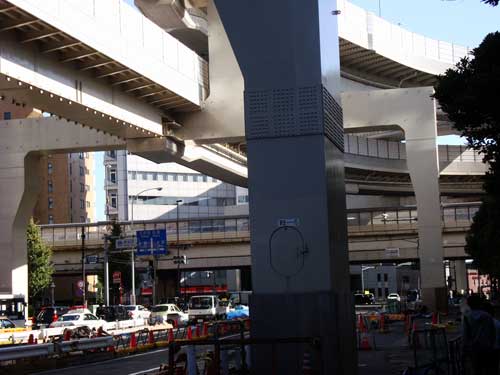
「東京は人間のための都市(まち)に向けて変容していけるのでしょうか。」週末に、『家の外の都市の中の家』という展示会を見ました。新しい社会条件に、東京の建築家が創造的なアプローチをします。人間が都市で一番な要素であれば、その都市はどんな風に見えるでしょうか。他人を認識することが良いことならば、住宅はどのように変わるでしょうか。建物と建物の隙間が、建築物と同じくらい大事ならば、都市生活はどう感じるだろうか。時間があれば、10月2日まで展示会をご覧ください。
“Tokyo seems to be changing into a city that is meant for people,” concludes the introduction to the Tokyo Metabolizing exhibit at the Tokyo Opera City Art Gallery. The exhibit combines models and ideas from three architecture firms, Atelier Bow-Wow, Nishizawa Ryue, and Kitayama Koh, and formed part of the 2010 Venice Biennale.
Tokyo Metabolizing provides context for the rapid development of the world’s largest mega-city, and suggests new ways of living well in the city. I like how the architects respond with new dwelling types, including a blending of home and office, residences that share common spaces, and apartments where connectedness with others is valued more than privacy.
The architects are responding to new realities of who we live with and how we want to live. In Tokyo the average household is less than 2 people, and these smaller households seek new connections with neighbors, colleagues, and friends. I think the most radical suggestion is that an awareness of other people living around you might be considered a positive feature rather than something to be concealed or suppressed.
The metabolizing title harks back to a radical modernism from 1960s Tokyo, and foregrounds the city as a living organism: with a life, history, and progression. Carolyn Steel, in her book Hungry City, uses the concept of the city as an organism to focus attention on urban food delivery, prep and consumption. The urban built environment is also reflection of social life– from tax policy to demographics– and human aspirations.
I liked that Atelier Bow-Wow focuses on the untapped value of Tokyo’s void spaces: in-between, often wasted space between structures, which have potential for re-use and for gardens, community, and nature in the city.
The exhibit has great scale models, and is at Opera City until October 2. Also worth seeing is a special exhibit of recent works by young artist Ishii Toru (石井亨). Ishii creates psychedelic contemporary fantasies– full of convenience stores and fast food logos– using a traditional yuzen method of dyeing fabric.






